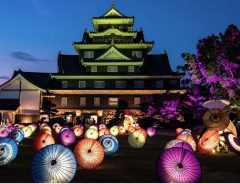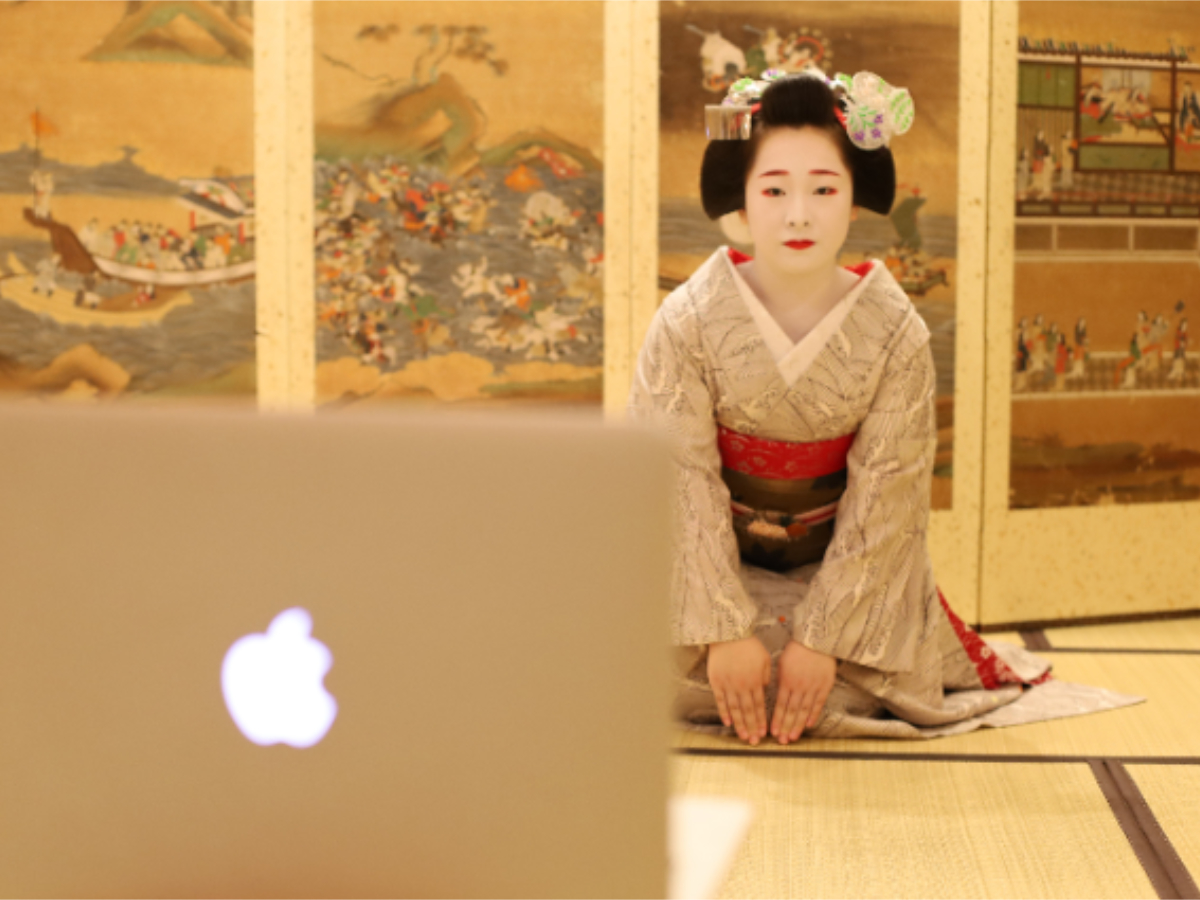- Tags:
- coronavirus / COVID-19 / Geisha / Japan
Related Article
-

“Beauty that leaves you speechless”–Photos of a stunning castle view in Okayama
-

Japan’s Caffè & Bar Pronto offers free “drinking etiquette” masks to patrons during pandemic
-

Collectors Are Torturing This Freddie Mercury Figure With Anime Idol Violence
-

We Tried Wine Frappuccinos And Tarts At Tokyo’s New ‘Starbucks Evenings’!
-

Japanese artist’s stunning photograph-esque illustrations look like a charming anime
-

Kyoto’s New “Yummy Bun” Is An Explosion Of Matcha Paste



By now, we are all fed up of hearing about the upset and global catastrophe that COVID-19 has brought upon the world. The virus has been the bane of 2020’s existence. Affecting both businesses and the social lives of people across the globe, there has been no place or person untouched by the grip of the virus.
We all wonder when life will return to normal, yet when we are so concerned about the situation of our own future, it is easy to overlook and forget the individuals and communities that have been keeping traditional cultures alive.
Gokagai is the term given in Kyoto to the areas made up of Hanamachi – districts where geisha live and work – and is amongst the former capital’s most charming tourist spots, as well as one of Japan’s most famous locations.
With streets framed by traditional machiya houses and cherry blossoms, Gokagai is the home of Japan’s largest community of geisha and maiko.
With the tourism industry hit hard by the coronavirus, Gokagai is now at a major crossroads. Adapt and evolve, or face existing only in the history books.
Up until recently, organised meetings with maiko and geisha in Kyoto could only take place in tatami rooms or during special events and were more often than not a rare luxury that not many could afford. However, with the current situation and uncertainty in the air, there has been a strong desire within Kyoto to preserve the traditions of Kyoto’s Hanamachi area with new ideas. In addition to in-person private maiko tea ceremonies, it is now possible to safely enjoy all the entertainment provided by maiko online, such as tea ceremonies, dances, musical performances and conversations.
With Hanamachi in danger of disappearing, the district is hoping to use innovative ideas to keep their traditions and culture alive.
On a typical day in Gokagai, tourists will flock to the area in their hundreds, hoping to catch a glimpse of a maiko student as she rushes around from okiya to ochaya. COVID-19 has changed that. Now the usually busy streets are quiet, and not unlike that of a ghost town.
Kyoto’s Gion Shimbashi after the coronavirus outbreak.
The effects and influences of the new coronavirus began to appear in Kyoto’s Hanamachi areas in early February. With fears of rising cases, teahouse reservations began to dramatically decline and by March they were all but cancelled. Additionally, in order to prevent the spread of COVID-19, and to give top priority to the health and safety of spectators, geisha and maiko, the Spring season odori (public dance) held annually in each Hanamachi was cancelled one after another.
With mass cancelations, many geisha and maiko had no choice but to leave their okiya (the lodging house a geisha belongs to during her career), and return to their parent’s homes. However, as the country announced a state of emergency, they did not sit idly by. Alongside continuing to practice their arts with teachers via online classes, many found ways to contribute to their local community, such as sewing face masks for the elderly. Approximately 470 masks hand-sewn masks, made from tenugui towels the geisha normally hand out during events, were presented to Kyoto City.
Following the government’s announcement of emergency restrictions, all businesses in Gokogai stopped operating in April. This marked the first time that geisha districts had been forced to close since World War II.
The Kyoto Traditional Musical Art Foundation (Ookini Zaidan) announced a subsidy of 100,000 yen per person, in order to support the geisha and maiko during the crisis, but with the high expense of training, lodging and outfitting, there are fears that the financial aid is not enough.
The districts reopened on June 1st, but with strict new rules and guidelines put in place to help prevent any possible spread of the virus. Before the outbreak meetings and events would take place in a tatami room, with the geisha and maiko sitting next to the client. Now the rules stipulate that a distance of 1-2 meters must be kept between the performers and their customers. Where the geisha and maiko would once engage in conversation with their client as they poured drinks, they must now do so in silence. Additionally, there are now limits on the amount of time that geisha and maiko can spend in a single location, as well as a curfew of 10pm.
Many people are in disagreement with all of the changes that are occurring in the Hanamachi areas, with some arguing that traditions that have been passed down since ancient times, should only continue in the same way that they have always done. With the survival of Kyoto’s traditional culture hanging by a small thread, these divisions and difficulties have led to the birth of new ideas.
One such idea, designed by traditional tea ceremony company, KYOTO MAIKOYA is their ‘Private Maiko Tea Ceremony’, which allows customers to safely interact with maiko even during the era of COVID-19.
In this experience, customers are seated at a sufficient distance from their entertainer. Instead of having tea made by the maiko, participants will be taught how to make traditional tea and serve themselves during the meeting. The maiko, who will have continued her practice during the state of emergency period, will then perform a traditional dance for the client. The performance will be followed by ‘chat time’, where customers can expect to engage in conversations about the daily life of maiko and geisha during these abnormal and uncertain times.
Fusing tradition with technology, KYOTO MAIKOYA have also produced the ‘Online Maiko Tea Ceremony’. This event allows clients to experience the traditional beauty and hospitality of maiko and geisha from the comfort of their own home. The session takes place over 1 hour and includes a maiko tea ceremony, dance performance and chat time with the maiko.
Both the ‘Private Maiko Tea Ceremony’ and the ‘Online Maiko Tea Ceremony’ provided by KYOTO MAIKOYA, feature maiko (geisha in training) dressed in their full outfit ensemble, which often takes 2-3 hours and the assistance of others to put on. For this reason, both events are on the pricier side, which director of KYOTO MAIKOYA, Adam Acar, argues is out of respect for the immense effort put in by both the maiko and her assistants, even during the global pandemic.
COVID-19, social distancing and anti-virus measurements has forced the geisha and maiko of Kyoto to adapt to the new and challenging times. Whilst most people focussed on themselves during the early months of the pandemic, it was the geisha and maiko who continued to bring joy and entertainment to their clients in the tea houses that they have come to call home. However, as the pandemic advanced and in the months since, the performers have found new ways to entertain and keep cultural traditions alive in the socially distanced era.
What was once a close and intimate experience kept to the confines of a teahouse, has now become a performance that can be experienced globally by fusing together technology and tradition. Hard times and uncertainty may lie ahead, but with the strong will and adaptations of Kyoto’s Hanamachi, we can expect to be graced by geisha and maiko for some time yet.